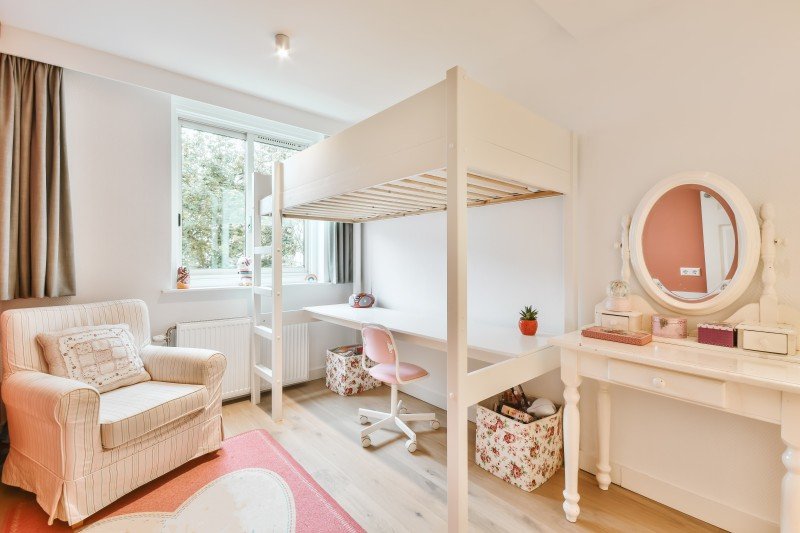Bunk Beds for Kids: A Comprehensive Guide
Bunk beds have been a popular choice for kids's bed rooms for many years. They use a space-saving option that maximizes flooring location, provides enjoyable climbing options, and is available in a range of styles that appeal to children's creativities. This article explores the advantages, considerations, styles, and safety features associated with bunk beds for kids.
Advantages of Bunk Beds
Bunk beds present numerous benefits that make them an appealing option for households. Here are some crucial benefits:
Space Saving
- Bunk beds enable two or more kids to share a room without compromising space for play or other activities.
Cost-efficient
- Buying a single bunk bed can be more affordable than buying two different beds.
Fun Factor
- Kids often see bunk beds as an enjoyable location to sleep and play, promoting a sense of experience.
Flexibility
- Bunk beds are offered in numerous configurations, including L-shaped, loft beds, and even convertible designs that can change as kids grow.
Company
- Many bunk beds feature built-in storage options, such as shelves and drawers, helping keep spaces organized.
Key Considerations Before Purchasing
Before purchasing a bunk bed, it's necessary to think about particular aspects, such as:
- Space Requirements
Measure the room to ensure that there is enough vertical space, allowing for sufficient headroom on the top bunk. - Age of Your Children
Consider their age and maturity. Many makers advise that kids under six must not sleep in the leading bunk due to security concerns. - Weight Limit
It's vital to inspect the weight limits of the bunk bed for both the top and bottom bunks to make sure safety. - Style Preferences
Select a style that matches the space's decoration and the kids's preferences. - Product
Bunk beds are readily available in different materials, such as wood or metal. Each has its advantages and downsides regarding sturdiness and aesthetic appeals.
Designs of Bunk Beds
Bunk beds can be found in numerous designs to fit different visual appeals and practical requirements. Here's a list of some popular styles:
- Standard Bunk Beds
Timeless stacked beds that include two beds built one above the other. - Loft Beds
A bed elevated high off the ground, with space underneath for a desk, play area, or storage. - L-Shaped Bunk Beds
Two beds set up in an L-shape, providing more floor space and a special style aspect. - Twin Over Full Bunk Beds
These options include a twin bed on leading and a full-sized bed on the bottom, accommodating older kids or adults. - Triple Bunk Beds
Designed for 3 children, these beds generally include 3 stacked beds, perfect for bigger households.
Security Features to Consider
Ensuring the security of kids using bunk beds is paramount. Here are some security includes to search for before purchasing:
- Guardrails
A bunk bed ought to include strong guardrails on the leading bunk to prevent unexpected falls. - Ladders
Make sure that the ladder is securely connected and simple for children to browse safely. - Stability
Try to find bunk beds with lower center of mass and large bases to provide better stability. - Quality Construction
Select beds made from resilient products that meet safety standards, such as ASTM (American Society for Testing and Materials) policies.
Frequently Asked Questions About Bunk Beds
1. What age is proper for a leading bunk?Generally, children aged six and older are advised for sleeping in the leading bunk. 2. Are bunk beds safe for toddlers?Most specialists recommend versus
positioning young children in the top bunk due to the
risk of falls and incorrect ladder usage. 3. Bryon Goldenstein be separated?Many bunk beds are created to be separated into 2 standalone beds,
supplying added flexibility as children grow
. 4. How do I preserve a bunk bed?Regularly look for loose screws and use, keep bed mattress clean, and guarantee that the bunk bed is
steady to extend its life-span. 5.
Exist any special mattress requirements for bunk beds?Yes, bed mattress for bunk beds need to fit snugly without leaving gaps. Typically, thinner mattresses
(around 6 to 8 inches )are recommended for leading bunks for security. Bunk beds use a flexible, useful, and fun option for kids's sleeping plans, optimizing space while accommodating numerous kids in one room. By considering the crucial elements
of design, safety, and space, moms and dads can make an informed choice when choosing the best bunk bed for their children's needs. With the right care and maintenance, a bunk bed can be a beloved piece of furnishings that supplies years of usage and satisfaction for kids. Summary Table of Bunk Bed Styles Design Description Best For Requirement Bunk Beds Traditional style, two stacked beds Smaller spaces Loft Beds Elevated bed with open space below Research study or play locations L-Shaped Bunk Beds 2 beds in an L-shape
Added floor space Twin Over Full Twin on the top,
| complete on bottom Accommodating older kids Triple | ||||||
|---|---|---|---|---|---|---|
| Bunk Beds | 3 stacked beds | Bigger households By comprehending | the various options readily available, designated factors to consider for security and performance, and suitable age guidelines, households | can choose the best bunk bed that not | just improves their home | but also makes sure a safe and |
| pleasurable sleeping environment | for their kids.

|
